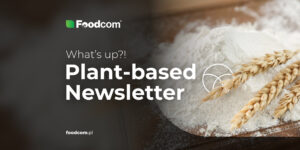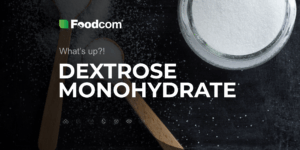Resumen
Índice
This is our summary of the week 5 on the European dairy market divided into 4 main categories.
The supply of SMP, which is, and most likely will stay tight, pushes the price up. As the price for skim milk is around 0.33-0.34 ex, one can assume that the SMP should still be firming. Prices at the level of 3.60 EUR/kg are widely accepted and it’s hard to find bigger quantities at this level. Buyers from both Europe and Export destinations are clearing out stocks for Q1 and Q2.
The situation regarding FCMPremains dynamic, as the prices in Europe are influenced by New Zealand’s pricing.
Not only food, but also feed availability of whey is scarce. Chinese New Year temporarily slowed down the activity on export market, yet the feelings are that the demand is big with no regard to the price.
The demand for cheese is growing. Not only retail, but food producers and export customers are getting active. The supply is limited by the milk output. This contributes to the pricing which remains strong for Q2.
The latest GDT finished with a strong growth as the index broke 1,400 mark for the first time since 2014.
Butter remained fairly stable in January with some last minute sales pushing the price up. It comes as no surprise that in Poland butter can be found cheaper than in the Western Europe.
Nevertheless, German retailer closed its tender for 250 gr butter cubes for February at 5,76 EUR/kg.
Bulk buyers are waiting to see how the situation unfolds. Most looks are focused on Q2 and some actions are being undertake.
The demand for AMF is strong.
The seasonal milk output increases across Europe, but not at the rate that was seen in previous years.
It’s worth to note that milk production in Netherlands in 2021 was 2.58% lower than in 2020. The similar situation takes places in other European countries. There are many factors that contribute to this situation – decreasing number of cows, strengthened slaughter prices and increasing costs among others.
Powders
The supply of SMP, which is, and most likely will stay tight, pushes the price up. As the price for skim milk is around 0.33-0.34 ex, one can assume that the SMP should still be firming. Prices at the level of 3.60 EUR/kg are widely accepted and it’s hard to find bigger quantities at this level. Buyers from both Europe and Export destinations are clearing out stocks for Q1 and Q2.
The situation regarding FCMPremains dynamic, as the prices in Europe are influenced by New Zealand’s pricing.
Not only food, but also feed availability of whey is scarce. Chinese New Year temporarily slowed down the activity on export market, yet the feelings are that the demand is big with no regard to the price.
Cheese
The demand for cheese is growing. Not only retail, but food producers and export customers are getting active. The supply is limited by the milk output. This contributes to the pricing which remains strong for Q2.
The latest GDT finished with a strong growth as the index broke 1,400 mark for the first time since 2014.
Butter
Butter remained fairly stable in January with some last minute sales pushing the price up. It comes as no surprise that in Poland butter can be found cheaper than in the Western Europe.
Nevertheless, German retailer closed its tender for 250 gr butter cubes for February at 5,76 EUR/kg.
Bulk buyers are waiting to see how the situation unfolds. Most looks are focused on Q2 and some actions are being undertake.
The demand for AMF is strong.
Liquids
The seasonal milk output increases across Europe, but not at the rate that was seen in previous years.
It’s worth to note that milk production in Netherlands in 2021 was 2.58% lower than in 2020. The similar situation takes places in other European countries. There are many factors that contribute to this situation – decreasing number of cows, strengthened slaughter prices and increasing costs among others.
Categorías:







